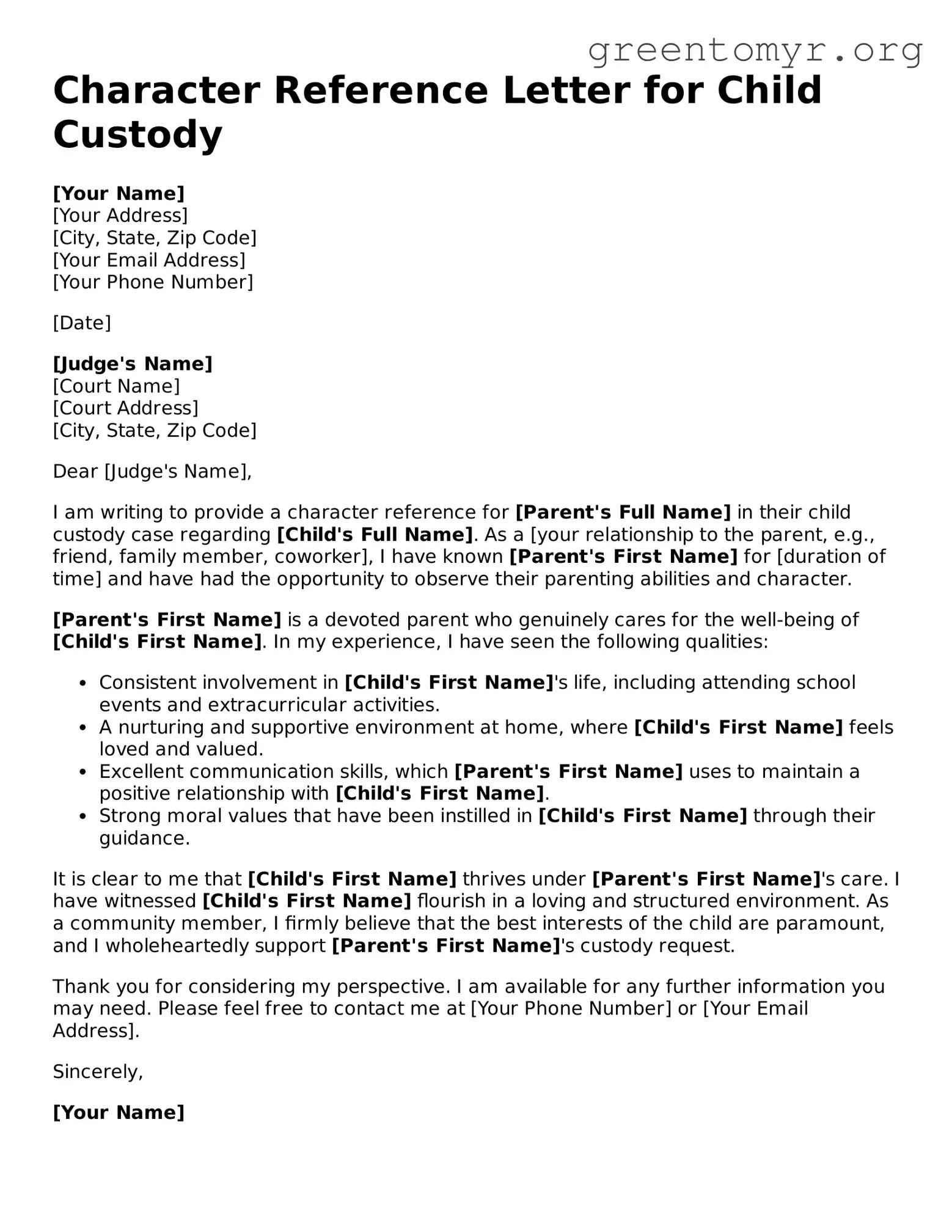Character Reference Letter for Child Custody
[Your Name]
[Your Address]
[City, State, Zip Code]
[Your Email Address]
[Your Phone Number]
[Date]
[Judge's Name]
[Court Name]
[Court Address]
[City, State, Zip Code]
Dear [Judge's Name],
I am writing to provide a character reference for [Parent's Full Name] in their child custody case regarding [Child's Full Name]. As a [your relationship to the parent, e.g., friend, family member, coworker], I have known [Parent's First Name] for [duration of time] and have had the opportunity to observe their parenting abilities and character.
[Parent's First Name] is a devoted parent who genuinely cares for the well-being of [Child's First Name]. In my experience, I have seen the following qualities:
- Consistent involvement in [Child's First Name]'s life, including attending school events and extracurricular activities.
- A nurturing and supportive environment at home, where [Child's First Name] feels loved and valued.
- Excellent communication skills, which [Parent's First Name] uses to maintain a positive relationship with [Child's First Name].
- Strong moral values that have been instilled in [Child's First Name] through their guidance.
It is clear to me that [Child's First Name] thrives under [Parent's First Name]'s care. I have witnessed [Child's First Name] flourish in a loving and structured environment. As a community member, I firmly believe that the best interests of the child are paramount, and I wholeheartedly support [Parent's First Name]'s custody request.
Thank you for considering my perspective. I am available for any further information you may need. Please feel free to contact me at [Your Phone Number] or [Your Email Address].
Sincerely,
[Your Name]
